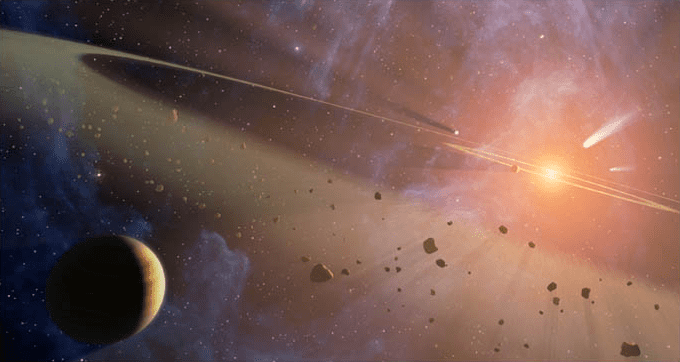
A handy checklist in extracted from Gerald Schroeder’s 2009 book God According to God: A Scientist Discovers We’ve Been Wrong About God All Along (75-77)
In order to begin to get some hint as to how many planets or even moons able to support . . . life there might be in our universe, let’s review each of the variables needed for advanced intelligent life on a planet circling a star:
- a spiral galaxy not in collision;
- a low concentration of stars in the local region of the target star (most stars are within the high-density galactic center and spiral arms; many are binary stars);
- location in the galactic region of high local density of metals to produce a metal-rich stellar system;
- a star with a mass similar to the sun’s mass, so that its energy output remains nominally constant for at least five billion years;
- formation of a stellar system around the remnants of a second- or third-generation supernova (a second- or third-generation supernova is required to account for the needed heavy elements that formed in the previous supernovae) within a few billion years following the most recent supernova (to ensure that sufficient radioactive uranium, thorium, and potassium remain to supply the radiant heat required to maintain the thermal cells of the iron core in their molten state, the motion of which produces, among other effects, the magnetic field of the earth, a force that shields the earth’s surface from much lethal cosmic radiation);
- a metal-rich planet (to have the elements needed to form the complex molecules of life);
- a low (relative to asteroid composition) carbon content (to avoid a heat-trapping, carbon dioxide-rich atmosphere);
- a low (relative to asteroid composition) water content (to allow moderate ocean cover, but also the presence of dry land masses);
- a rotating molten iron-rich core in the planet (to induce a radiation-shielding magnetic field);
- a planet with mass able to hold an oxygen-rich but not hydrogen-rich atmosphere (hydrogen is too chemically reactive);
- plate tectonics (to produce continental drift and the resulting mountain chains yielding diverse climates and therefore a diverse biosphere);
- a planet with nearly circular orbit (to ensure fairly constant solar input year-round);
- a planet at approximately 150 million kilometers from a sunlike star (close enough to receive sufficient sunlight for warmth and oxygen-releasing photosynthesis, but not so close as to tidally lock it to its star);
- a planetary system with huge outer planets (to help reduce the frequency of devastating meteor impacts on the inner planets; of the thousands of stars studied in the search for stars with planets circling them, to date only a few have been found to have planets and almost all of those to date have been massive and close to the parent star; the planets are observed by the periodic wobbling of stars or by light occlusion as the planet crosses our line of sight to the star);
- a planetary system with no huge inner planets (their gravitational interaction with smaller inner planets would either obviate the formation of coherent inner planets as exemplified by the asteroid belt, or if planets did form, they would gradually be driven into the central star);
- planetary rotation with a period on the order of days (to ensure all-around distribution of incoming solar radiation);
- a moderate tilt to the planet’s axis of rotation (to induce a more uniform north-south distribution of incoming solar radiation); and
- a large moon (for tidal mixing)











